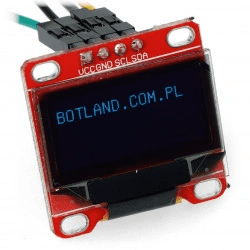Table of Contents:
We look at them every day. They surround us from everywhere. Made up of millions of pixels and their quality, or rather the quality of the display, refers to them: a 4K display, for example, consists of 3840 x 2160 or 4096 x 2160 pixels. A pixel consists of three subpixels: red, blue and green – commonly referred to as RGB. The color yellow “does not exist electronically” and is a mixture of the primary colors. When the subpixels in a pixel change color combinations, you can get a different color. And that’s usually where common knowledge about LCD displays ends. There are still diagonals in inches and a few manufacturer names. There’s a lot of highly condensed knowledge ahead.
LCD display technology
Liquid crystals were discovered in 1888 and actually by accident. Austrian botanist Friedrich Reinitzer noticed that cholesterol benzoate derived from carrots had two melting points. At 145°C it melted changing its state of aggregation into a liquid, which remained milky white up to 179°C and became transparent above this temperature. Nearly a century later American inventor James Fergason created the first working liquid crystal display in 1970. Prior to that, such devices consumed too much power, their lifespan was limited, and image contrast was at a low level. A new type of monitor, the LCD one, was unveiled a year later.
The molecules of liquid crystals under the influence of an electric current can change their orientation and thus change the properties of the light beam passing through them. Based on this discovery, and thanks to further research, it became possible to discover the relationship between the increase in electric voltage and change in the orientation of the molecules of the crystal, which was to provide display of an image. Initially, liquid crystals were used in the displays of calculators and quartz watches, to be later used in monitors. Today, thanks to advances in the field, screens have become very popular in desktop computers and many other devices.
LCD technology is quite simple: LCD monitors containing a liquid crystal display are passive devices, meaning they do not produce any light to display characters, images, video and animation. LCDs alter the light that passes through them. The internal design shows how the light changes to produce virtually any characters and images.
An LCD display consists of two glass plates with a special liquid between them. The special feature of this liquid is that it rotates or “twists” the plane of polarized light. This effect is affected by the creation of an electric field. The glass plates are therefore coated with a very thin metallic layer. To obtain polarized light, a polarizing film, or polarizer, is applied to the lower glass plate. Another film must be applied to the lower glass plate, but this time with the plane of polarization twisted by 90°. This is referred to as an analyzer.



Liquid Crystal Displays (LCDs) are for those involved in electronics and programming, both hobbyist and professional. The built-in interface and specialized control circuitry makes it easy to connect an LCD display to a microcontroller. Liquid crystal displays are used, among others, in control panels of washing machines, stoves, air conditioners, vending machines, as well as many other automation devices. Our offer includes displays with various backlight colors and screen resolutions.
OLED displays
An organic light-emitting diode (OLED or organic LED) is a diode in which the emission layer is a layer of an organic compound. It emits light in response to an electric current. It sits between two electrodes and usually at least one of these electrodes is transparent. OLEDs are used to create digital displays in devices such as television screens, computer monitors, smartphones, hand-held gaming consoles, GPS navigators, and the now long-gone PDAs. An important area of research is the development of OLED devices for solid-state lighting applications.
Sony became the OLED pioneer – after the discovery of light emission caused by applying electric voltage to PPV polymer (PPVE) at Cambridge University in 1989, it took a long time before the company created the first palmtop based on OLED display in 2004. In 2007, however, a Sony film was released showing a flexible OLED display with a not yet very impressive resolution of 120×160 px.
Pros: highest contrast among current displays, higher color scale and brightness than LCD and shorter response time.
Cons: shorter lifespan (blue OLED – shortest), susceptibility to moisture, higher power consumption.
Touchscreen displays are something that anyone who has ever used a smartphone, tablet, or computer with a touch matrix has had contact with. They work “both ways” – they act as a touch input and simultaneously display output information. The access time is lightning fast and the sharpness and contrast are at a delightful level. In addition to OLED technology, there is the aforementioned LCD TFT – a type of LCD variant. This is not a type of matrix, but a type of transistor production technology. They are characterized by a much lower display quality, so it is difficult to compare them with the performance of OLED, let alone AMOLED. But it is less “power hungry” and useful in simple projects. Many of them work with computers and boards such as Arduino, Raspberry Pi, Odroid or BeagleBone.
How to choose a display?
How to select a display and determine its compatibility? The key issue: the interface. If it’s HDMI, it will be compatible with everything that has such a socket. Otherwise, we should pay attention to the interfaces/type of connection, i.e. whether we have DSI, UART, SPI or connection via I2C or GPIO pins. Convenient filtering on the Botland store website will surely help.
Another difference is the division into resistive and capacitive touch screens. A resistive touch screen is based on two plastic plates. The surface plate is covered by a thin layer of tin oxide and indium oxide on the bottom, which conduct electricity. Below the conductive material is a second plate, between which a contact is made when the user touches the display with a finger or stylus. This short circuit indicates to the processor where the contact is by measuring the horizontal and vertical resistances.
- Pros: good visibility, allows handwriting.
- Cons: visibility drops significantly in sunlight, no multitouch.
A capacitive touch screen, on the other hand, consists of a glass pane covered with an insulator. When the glass is touched, current flow is disrupted and the point of contact with the screen is measured from the four corners of the screen. Devices with the newer capacitive touch screens are also noticeably more expensive.
- Pros: decent visibility also in sunlight, multitouch support.
- Cons: operation only with finger and conductive materials – inconvenient especially when wearing gloves, susceptibility to “crazing” in negative temperatures.
The remaining issues are left to our choice. It is worth paying attention to the dimensions, i.e. the diagonal in inches, screen resolution and the fact whether it is touch-sensitive at all. If it is to be used only to display the given information, for example in the workplace, it is not uncommon for this function to be simply unnecessary.
You can also always contact our technical staff. And here’s a bonus:


How useful was this post?
Click on a star to rate it!
Average rating 0 / 5. Vote count: 0
No votes so far! Be the first to rate this post.




















